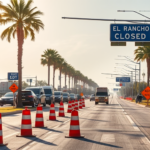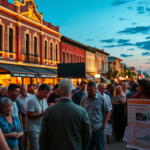Rising Populations in the Rio Grande Valley: Census Bureau Reports Significant Growth
In a development indicative of ongoing dynamic changes in South Texas, the U.S. Census Bureau has released the latest population estimates pointing to significant growth in several Rio Grande Valley (RGV) cities over the past four years. Cities such as Alton, Weslaco, Hidalgo, and Edinburg have been identified as among the fastest-growing areas, underscoring the region’s expanding potential and diverse appeal.
Key Findings: Booming Cities in the RGV
Among these expanding locales, Alton stands out with a dramatic 25.67% increase in its population, jumping from 18,227 in 2020 to 22,907 in 2024. This growth spurt places Alton at the forefront of local development, reflecting concerted efforts in urban planning and community infrastructure improvement.
Smaller communities also emerged as growth leaders, with Bayview growing by 17.83%, La Joya by 15.38%, and Rio Hondo by 13.84%. These increases showcase an appealing trend of demographic shifts not just in major cities but in smaller developments across the Valley, suggesting a broader regional allure.
In larger urban centers, Edinburg’s 8.39% increase, from 100,316 to 108,733, has not gone unnoticed. It ranks as the 25th fastest-growing city in the United States with a population exceeding 100,000, placing it 10th in Texas. Similarly, Weslaco’s population boost of 9.12% and Hidalgo’s 8.59% raise intriguing questions about the factors behind their respective draws.
Regional Development and Economic Implications
The expansion highlighted by the Census Bureau reinforces the optimistic outlook for economic development in the RGV. With growing populations, cities can expect bolstered local economies as increased demand for housing, services, and employment transform these areas into hubs of opportunity.
Mayor Ramiro Garza Jr. of Edinburg noted that strategic investments have been essential in this growth trajectory. “Edinburg is a city on the rise. This continued growth reflects the strength of our community and the results of our focused investments in quality of life, infrastructure, and economic opportunity,” he stated, suggesting a model for other Valley cities aiming for similar success.
These increases align with broader efforts to capitalize on the RGV’s position as a cultural and economic crossroads. Initiatives to enhance amenities, ease transportation linkages, and foster educational and employment opportunities play crucial roles in sustaining the expansion.
Understanding the Broader Community Impact
While population increases fortify economic potential, they also come with challenges that require careful navigation by local officials and policymakers. For instance, infrastructure developments must keep pace with burgeoning populations to maintain quality of life. Housing affordability and public services are central issues that demand continuous attention and resources.
Local economist Dr. Luis Carrasco emphasizes the need for balanced growth. “While these increases are promising, our communities must address associated challenges proactively—ensuring infrastructure, services, and housing remain accessible,” Dr. Carrasco advises.
Residents finding themselves amidst an evolving regional landscape can greatly influence these trajectories. Engagement in community planning and civic discussions is vital for aligning growth strategies with the foundational values and needs of Valley residents.
Connections to Past Trends and Future Outlook
This surge in population is reminiscent of historical periods of growth inspired by economic boons and investments, setting a pattern for adapting through resourcefulness and resilience. Equally important is acknowledging areas experiencing population declines, such as Edcouch and Palm Valley, which saw decreases of 3.26% and 4.01%, respectively. These variances highlight the importance of targeted interventions to address disparities in regional development.
Looking forward, the Census Bureau’s report encourages South Texas leaders to incorporate data insight into sustainable developmental approaches. As decisions unfold, aligning with census findings ensures that policy responses accurately reflect demographic realities.
Conclusion: Embracing Growth while Addressing Challenges
As the Rio Grande Valley navigates its growth trajectory, the latest population estimates provide a vibrant snapshot of regional evolution. While there is ample cause for optimism, the story of the RGV is incomplete without a commitment to sustainable and inclusive development strategies. With comprehensive planning and collaborative governance, the Valley can harness its demographic dynamism to secure a thriving future for all its residents.
For additional insights and resources related to demographic changes and policy planning, community members are encouraged to connect with local government offices or explore the latest data reports available online. Continued dialogue remains essential for maintaining the balance between growth, sustainability, and community interest—ensuring the RGV not only adapts but thrives in the face of change.







